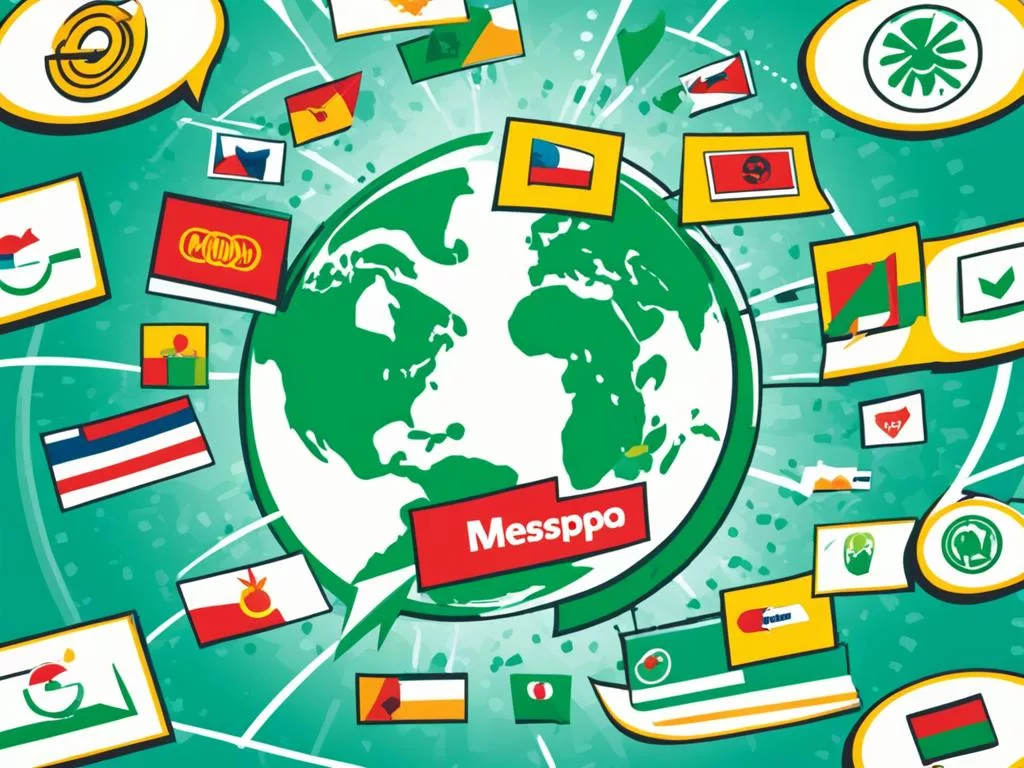I often send money abroad and know how vital a good transfer service is. That’s why I’ll tell you how to use Mpesa to send money from the UK to Kenya. M-Pesa makes it simple to send money, thanks to its wide reach and user-friendly system. This guide aims to help your funds get to Kenya quickly and safely.
Safaricom’s M-Pesa service lets UK residents easily support their families in Kenya. It’s interesting that over 10% of Kenya’s GDP goes through M-Pesa. This shows it’s more popular than traditional banking there12. With this guide, you’ll learn about a service that’s not just easy to use but also boosts financial openness and trust worldwide.
Understanding the M-Pesa Service for International Transfers
M-Pesa is becoming a key player in international money transfers. With 8 million subscribers in Kenya, it’s a major financial service. Especially for those without traditional banking3. Mobile technology is widespread, with 83% of Kenyans over 15 owning a phone. This shows the huge reach of mobile money services like M-Pesa3. Kenya has a high literacy rate, over 90% for men and over 80% for women. This helps more people use mobile financial services3.
Before M-Pesa, 38% of Kenyans didn’t use financial services. After its launch, the situation improved greatly3. Now, we see M-Pesa’s international transfer services. They are designed to help users manage money across countries.

M-Pesa was the first mobile money transfer service in Kenya. It grew quickly with little competition3. Yet, about 4.3% of users have sent money to the wrong person. Only a third got their money back3. It’s vital to be careful when sending money abroad.
| M-Pesa Integration | Challenges |
|---|---|
| Microfinance Integration | Reconciling manual processes with digital transactions |
| Internet Stability | Ensuring consistent connectivity for transactions |
| Security Protocols | Protecting against wrong recipient transfers |
Let’s look back at M-Pesa for a moment. It introduced the idea of mobile wallets in low-service areas3. The rise of this technology in Kenya, with a mobile penetration of 39% by 2008, is impressive3. These facts are striking when considering Kenya has 4 to 5 million bank accounts for 31 million people3. The story of M-Pesa highlights the potential of mobile finance globally.
- The vast subscriber base of M-Pesa showcases acceptance and reliability in the Kenyan market3.
- Challenges such as reconciling manual processes and ensuring stable internet connections shape the evolvement of M-Pesa’s service offerings3.
- Harnessing high literacy rates and mobile access paves the way for innovative financial solutions through M-Pesa3.
The evolution and hurdles of M-Pesa shed light on broader trends in finance. They are key for anyone interested in international transfers.
Guide to Sending Money from UK to Kenya via M-Pesa
M-Pesa has become a top way to move money to Kenya from the UK. By 2014, mobile money had reached 60% of markets in developing countries1. In Kenya, about 20 million people use M-Pesa, showing its huge popularity and trustworthiness1. M-Pesa has grown so much that it now makes up nearly half of Kenya’s GDP. This is a big leap from just 10% shortly after starting1.
Safaricom, the company behind M-Pesa, expanded its services to include sending money abroad. World Bank data from 2007 shows Kenya got roughly $1.3 billion in remittances2. They started a pilot in places with many Kenyans living abroad, testing 19 outlets over three months2. Today, people in the UK can send up to £250 for a fee of £6.90, with a limit of £1000 a month2.
M-Pesa is also part of efforts to fight corruption and increase financial transparency. Kenya aims to require mobile money for public transport payments. This could help reduce the money lost to theft, which is about a third of public transport revenue1. Using M-Pesa can help make society and the economy stronger.
M-Pesa quickly became popular among Kenya’s poorest, who earn less than $1.25 a day1. This shows M-Pesa’s crucial role for all income levels in Kenya.
When sending money from the UK to Kenya through M-Pesa, knowing about different service providers is key. They offer various fees and limits. This keeps the market competitive, offering better rates and lower fees.
In summary, M-Pesa is a great choice for sending money from the UK to Kenya. It is widely used, easy to use, and helps against corruption. M-Pesa is not just for sending money. It’s also a force for financial inclusion and progress.
The Best Third-Party Services for Transferring Funds to Kenya
Looking for the best way to transfer money to Kenya can be tough. I’ve found Western Union and WorldRemit to be top picks. Western Union is known for its long history and good prices. WorldRemit stands out for being affordable, making it great for Mpesa transfers.
It’s key to compare different services. Skrill is fast, Sendwave has no fees, and MoneyGram allows for bigger transfers. Rewire offers new, clever solutions.
Mobile money services are changing how we handle money, thanks to efforts like the FS Series and FS Share4. They teach U.S. program designers how to use mobile banking to reach more people4. This work is expanding what mobile money can do, much like M-Pesa did in Kenya4.
When I look at these services, I check how easy they are to use and how they can grow4. M-Pesa’s success in Kenya shows what’s possible4. This blending of tech and finance is making a difference worldwide, turning early ideas into major solutions for sending money4.
Source Links
- https://www.bbc.com/news/business-38667475
- https://www.finextra.com/newsarticle/20686/m-pesa-launches-uk-to-kenya-mobile-money-transfer-service
- https://documents1.worldbank.org/curated/en/832831500443778267/pdf/117403-WP-KE-Tool-6-7-Case-Study-M-PESA-Kenya-Series-IFC-mobile-money-toolkit-PUBLIC.pdf
- https://www.usaid.gov/sites/default/files/2022-05/Enabling Mobile Money Interventions.pdf

